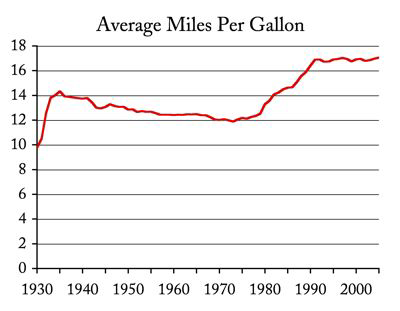No Light Rail in Vancouver!
Gas Prices and Driving

How do Americans respond when gasoline prices go up? A recent survey finds that many
people make an extra effort to find low-
The survey was commissioned by the National Association of Convenience Stores, which has an incentive to find out because most gasoline in American is sold by convenience stores (or gas stations that also sell convenience grocery items).
The survey found that 64 percent of people would drive five minutes out of their way, and 47 percent would drive 10 minutes out of their way, to save 5 cents a gallon on gasoline.
However, only 42 percent said they respond to higher prices by reducing their driving, and most of those (31 percent) said they only drive “somewhat less.” A full 57 percent said they drive the same amount whether prices are higher or lower.
This is exactly what an economist would predict. Higher prices will change the behavior of some people at the margin. But those prices are not going to lead to the wholesale changes in urban form that are predicted by many planners.
We can see that by looking at Europe, where (thanks to high taxes that are used to
subsidize transit and intercity rail) fuel costs at least twice as much as in the
U.S. Europeans do drive less, per capita, than Americans, yet — as Charles Lave points
out (pp. 4-
Ironically, higher taxes mean that Europeans are probably even less sensitive to
fuel price increases than Americans. When gas is $5 a gallon, it takes a $1 rise
in prices to have about the same effect as a 50-
Like any economic choice, driving a car is about trade offs. If gas prices rise, I might drive a little less, but I might also reduce my consumption of something else too, such as eating out at restaurants or shopping at boutiques. If the price increase seems permanent, then the next time I buy a car, I am likely to get one that gets better mileage so that I can drive as much as ever without spending more on fuel.
That’s what Americans did in the 1970s. Between 1973 and 1982, Americans increased their miles of driving by more than 21 percent. Yet they only increased their fuel consumption by 2.6 percent.

So the short-
To date, there have been no gasoline price increases due to actual shortages of raw material. The price increases in the 1970s and 1980s were entirely political. In more recent years, EPA rules mandating special formulas in different places make it impossible for producers to respond to shortages by simply piping oil across state lines. This means that natural events, such as an oil refinery fire or hurricane, can have a larger effect on prices than in the past.
If ever we do suffer a real shortage of raw material, however, the response will
be clear: drive a little less, then buy fuel-
6
Trackback • Posted in News commentary, Transportation
Reprinted from The Antiplanner